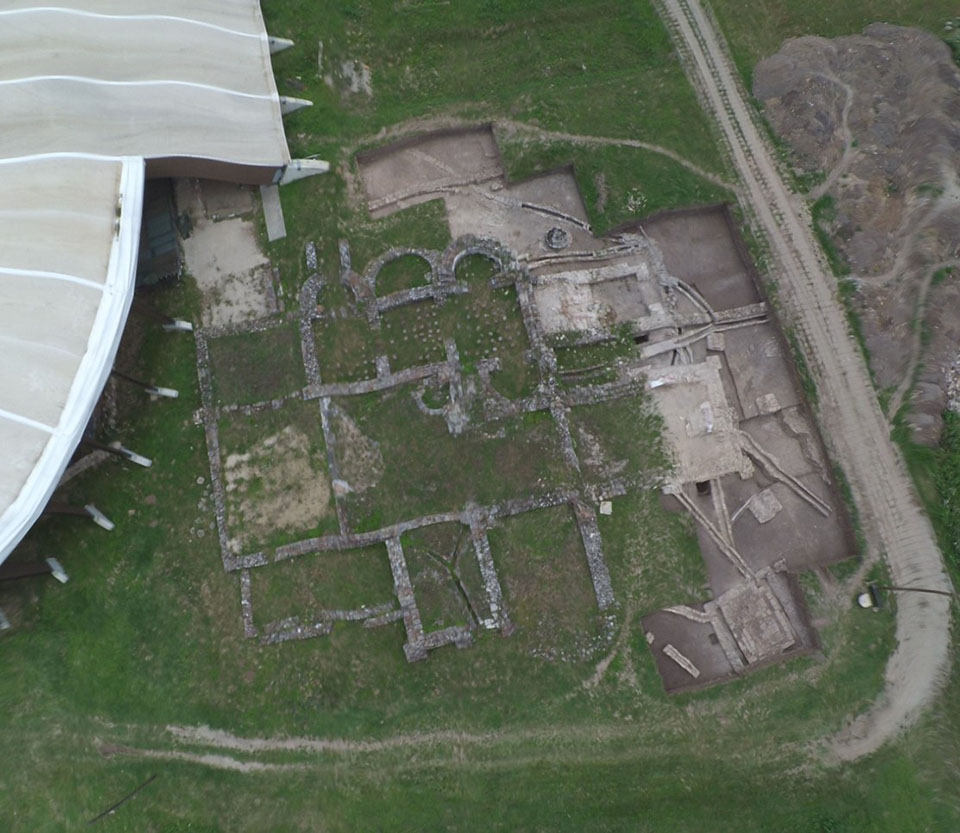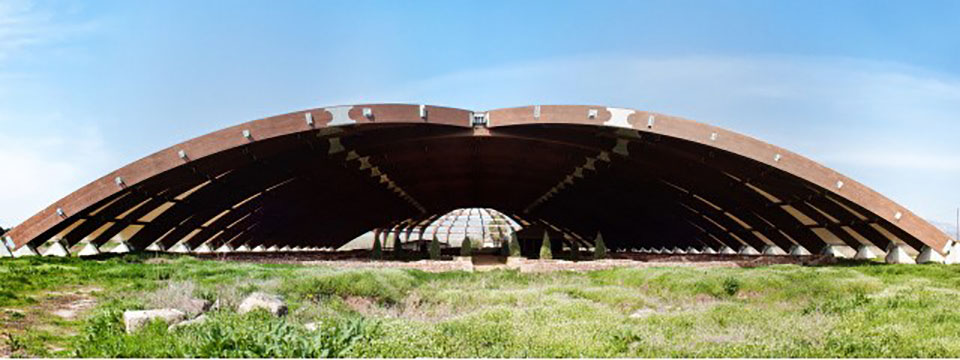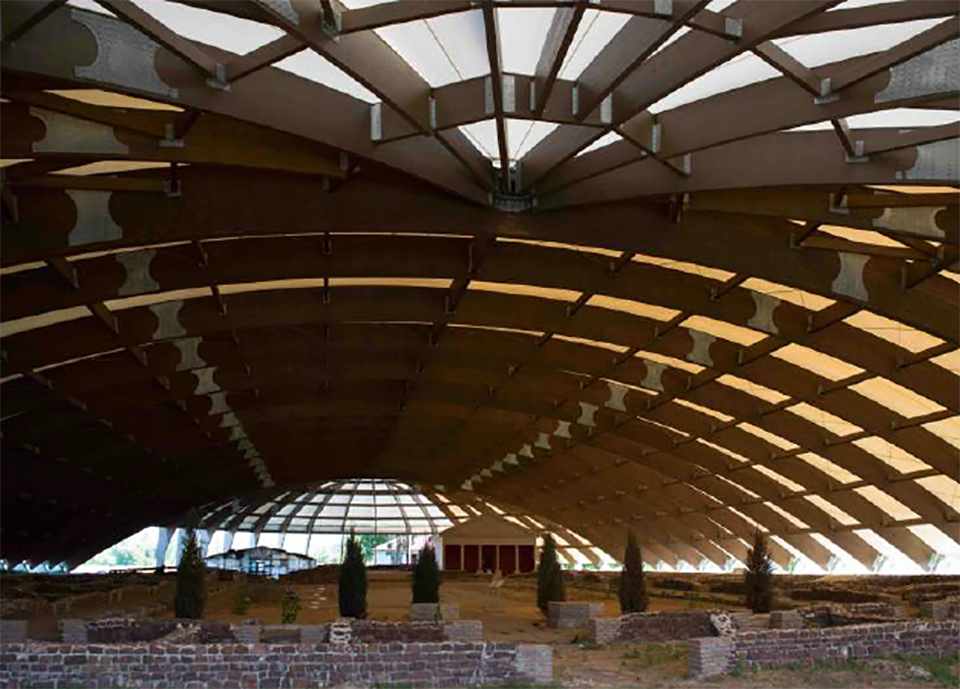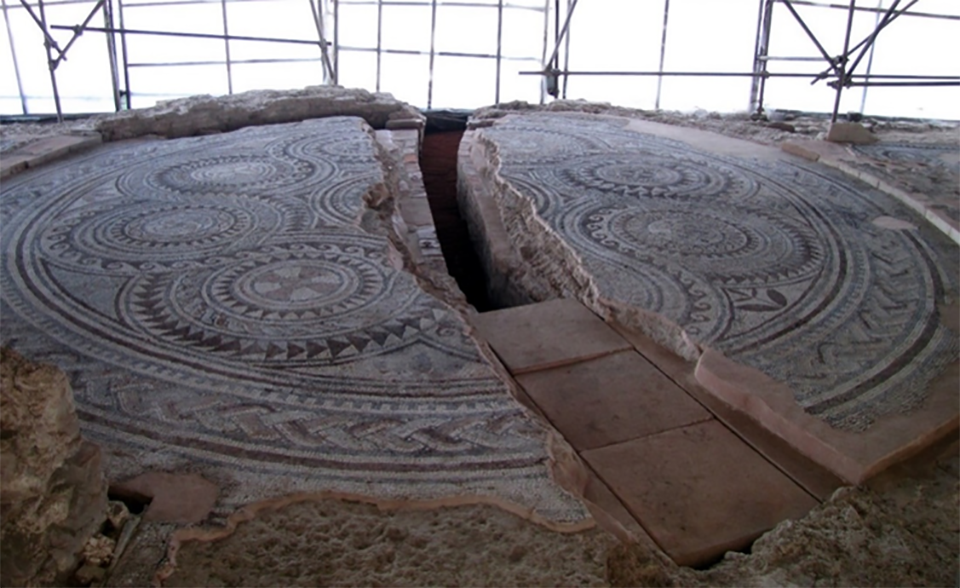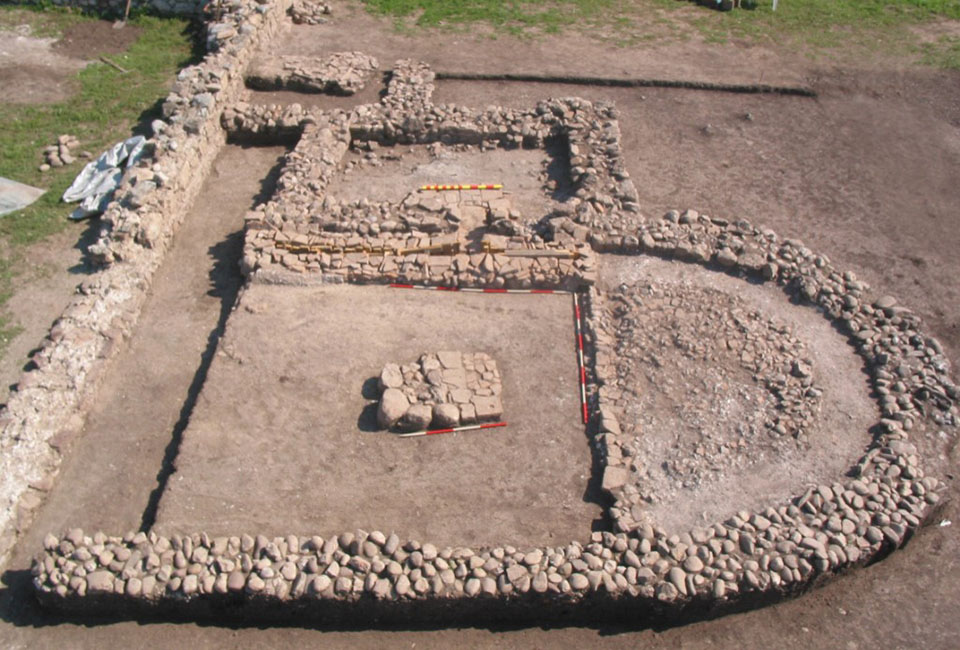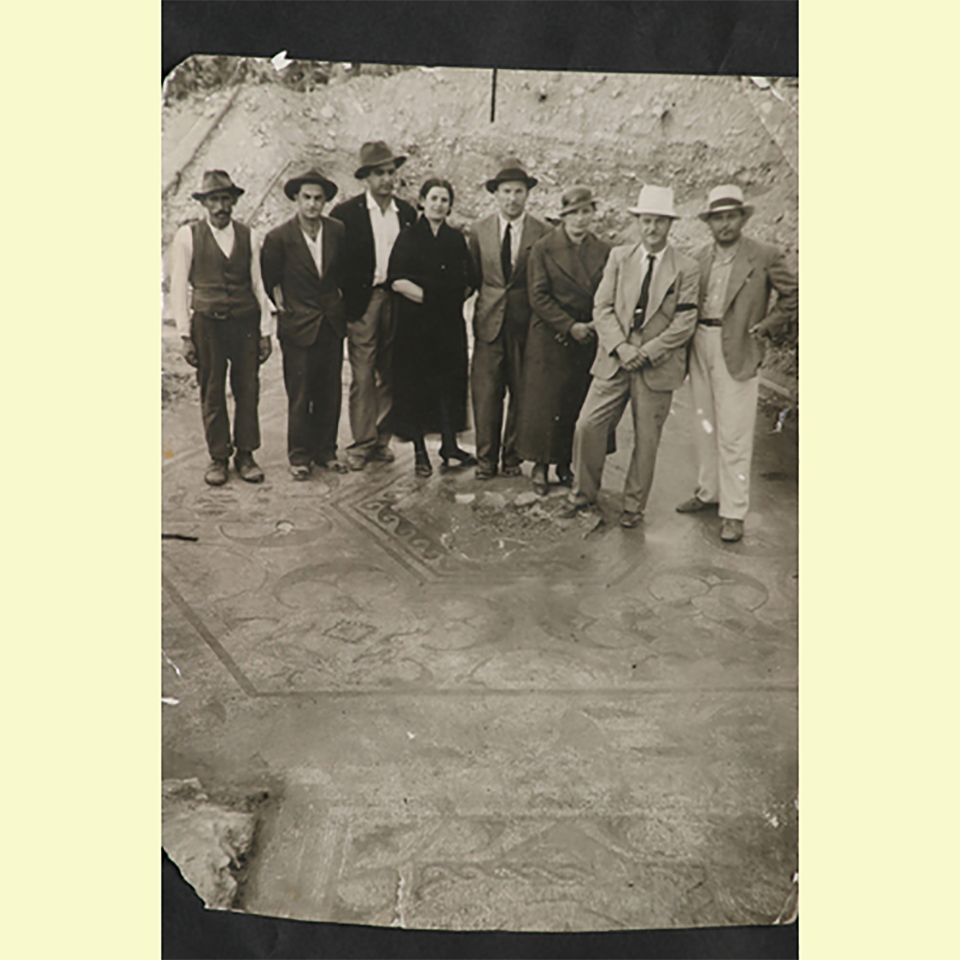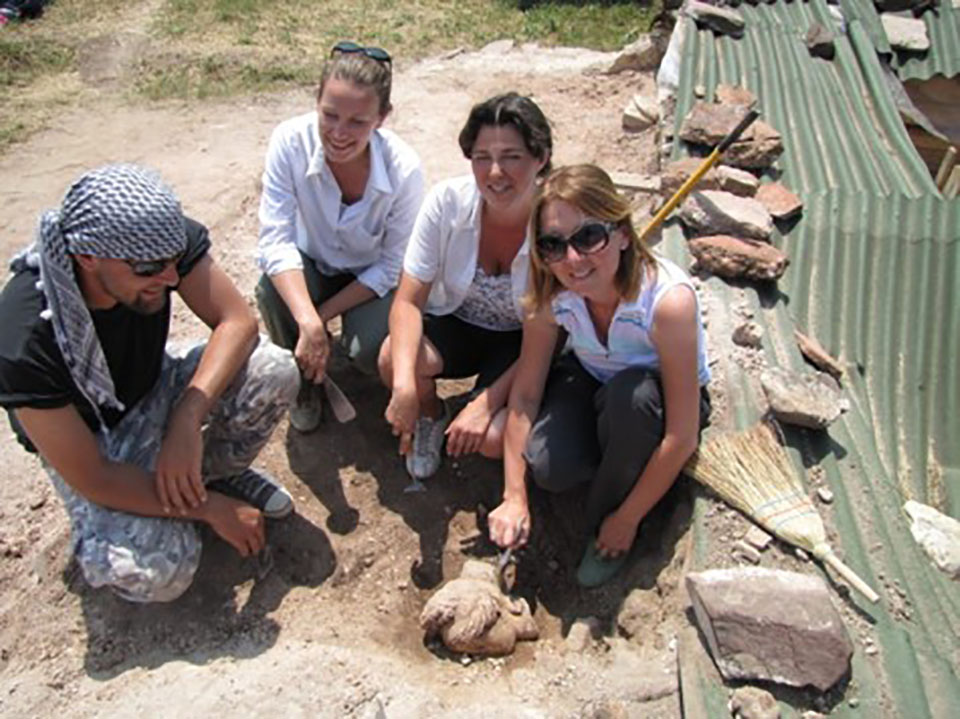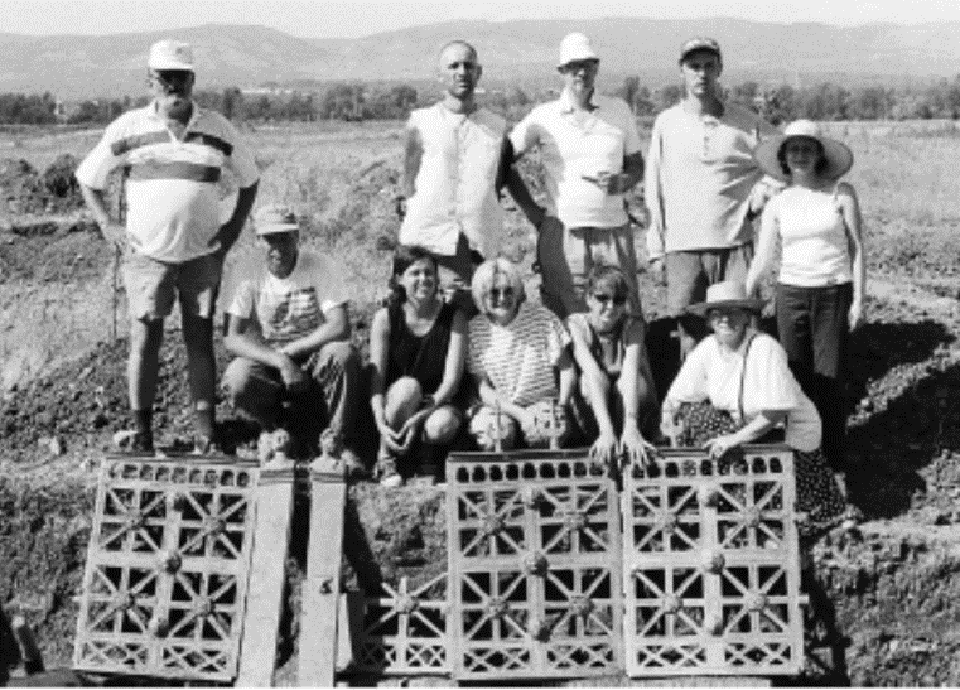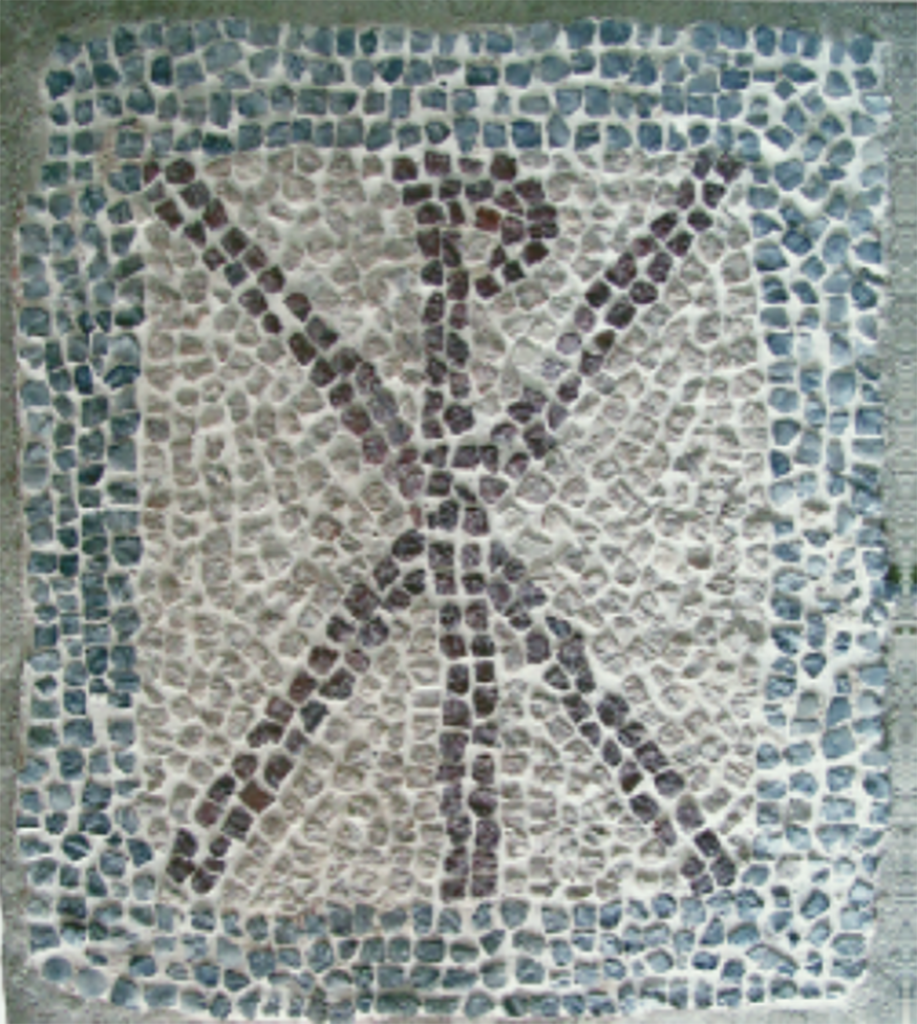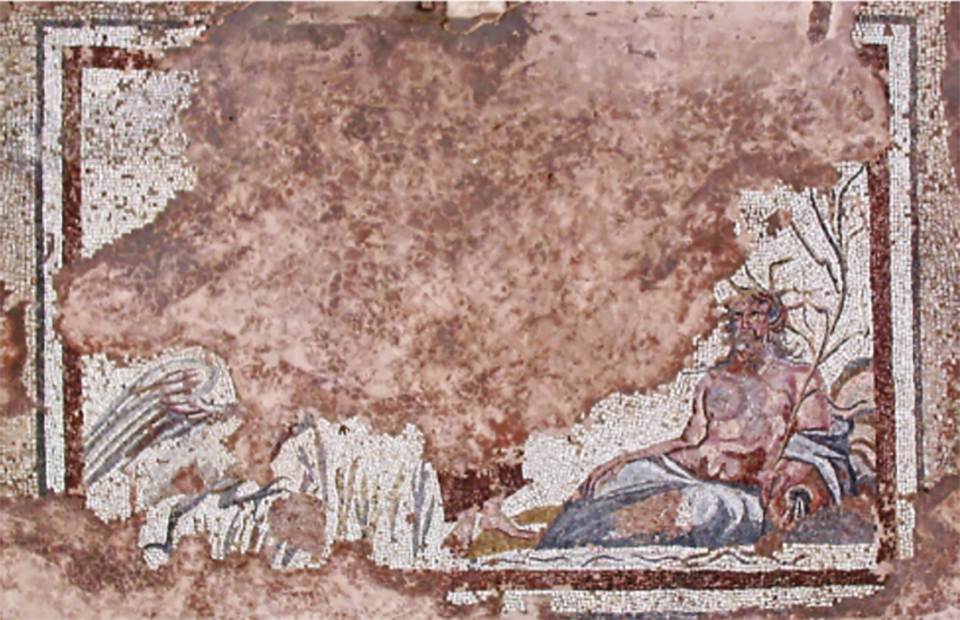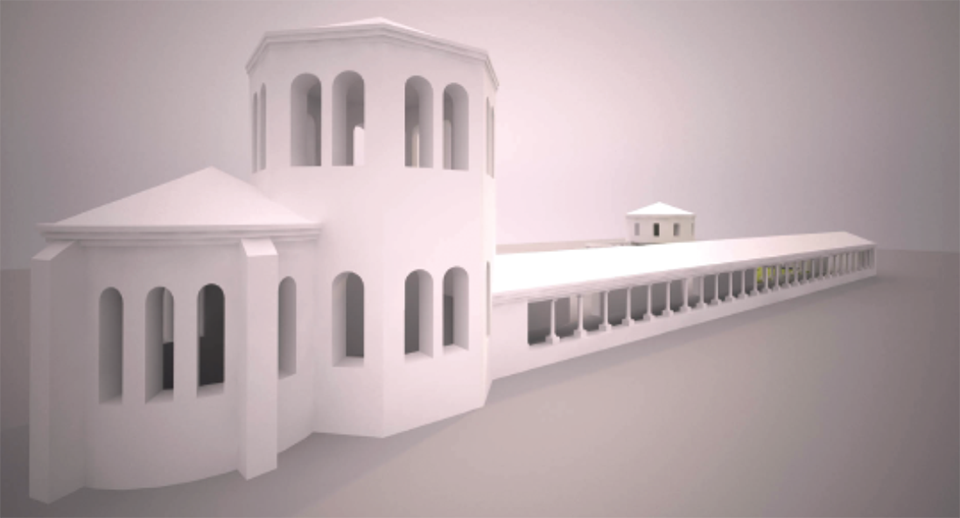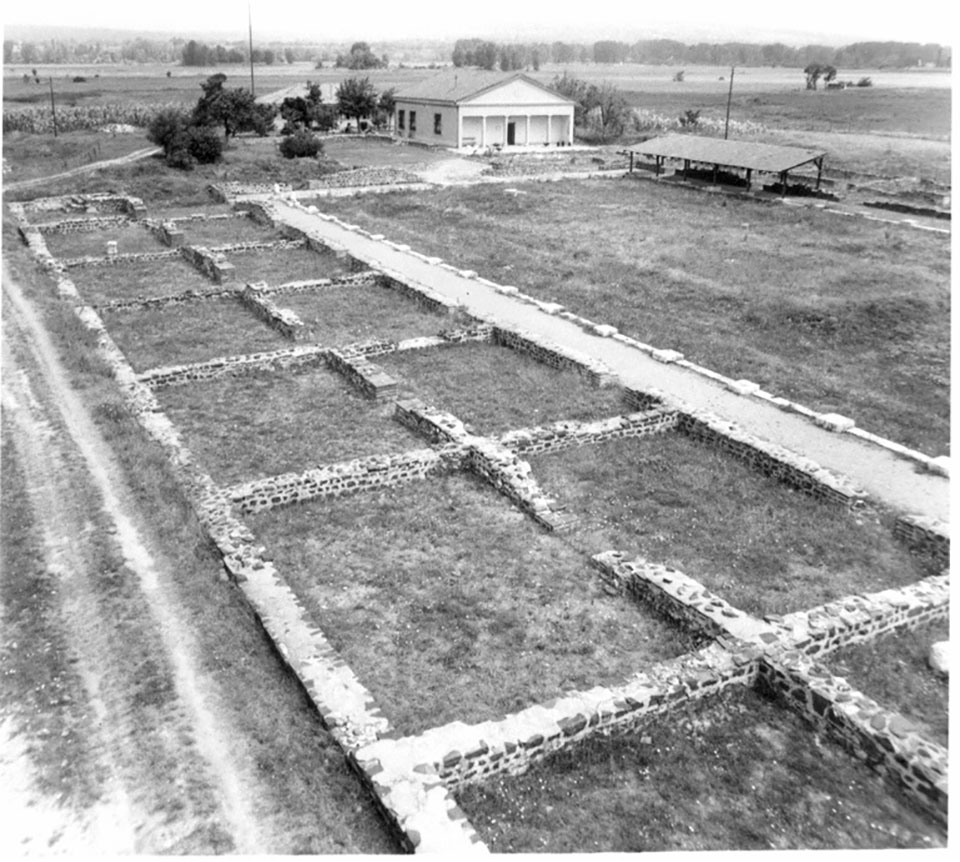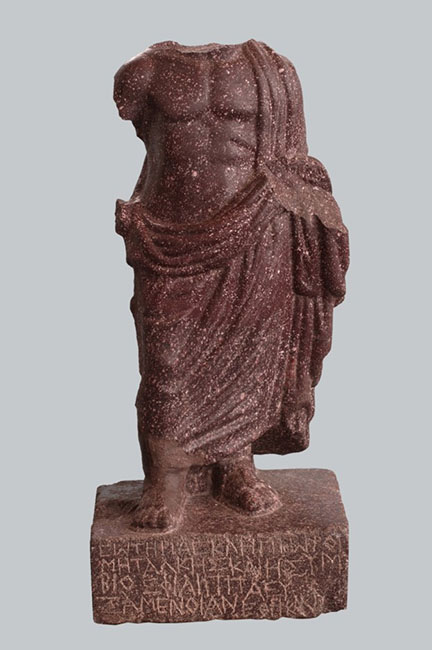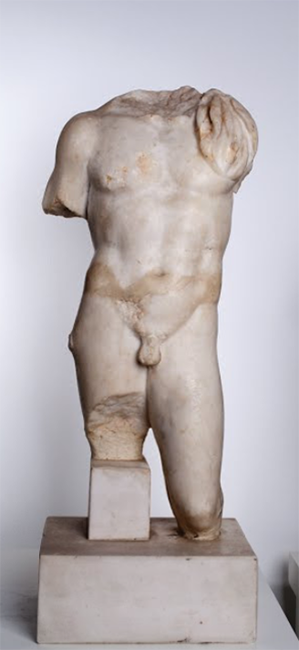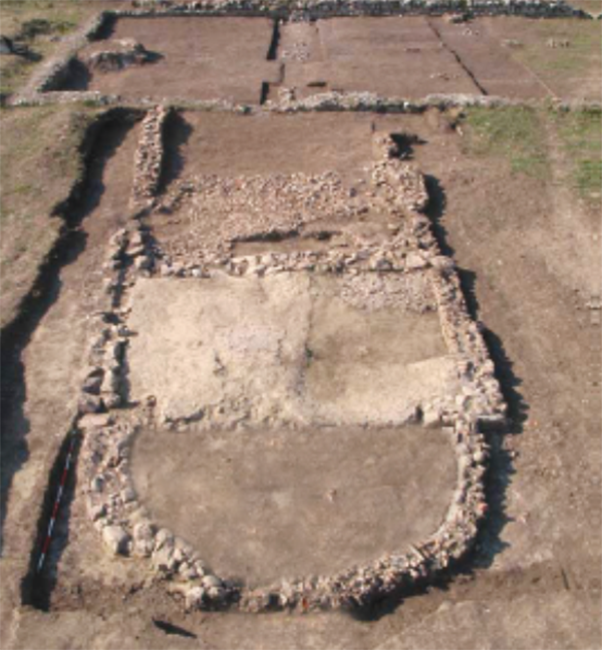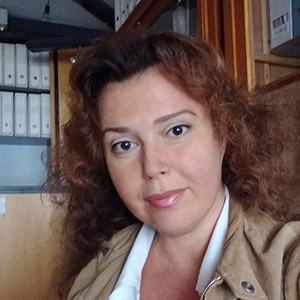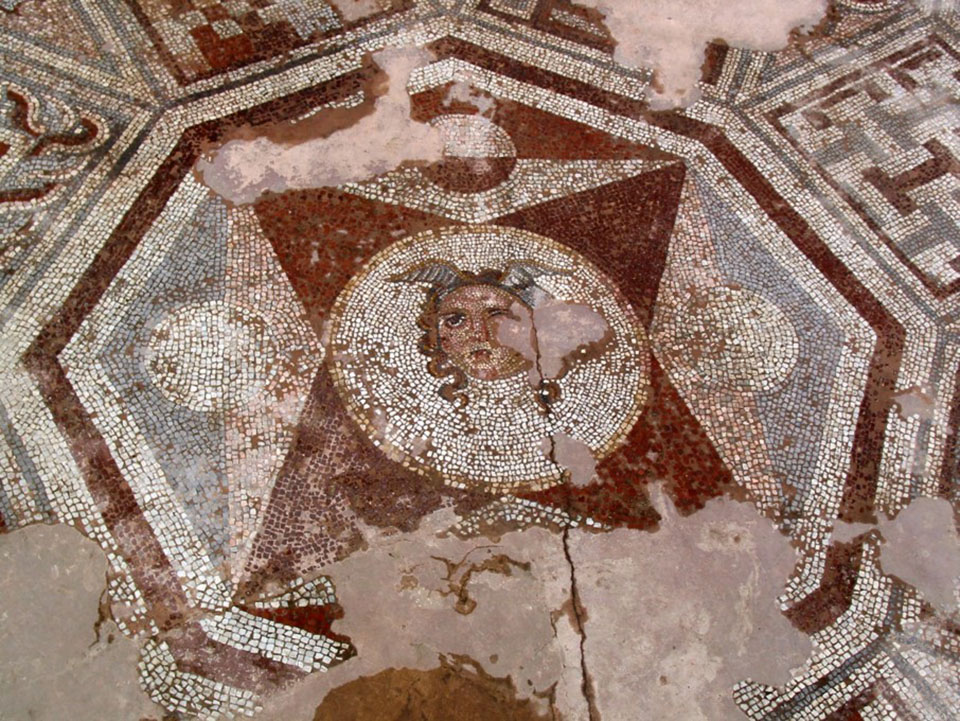
NAISSUS – MEDIANA

About the project
Mediana – Imperial Residence of Constantine the Great
Director of the project: Dr Nadežda Gavrilović Vitas
Team:
Dr Igor Bjelić, Institute of Archaeology, Belgrade
MA Marija Jović, Institute of Archaeology, Belgrade
Museum advisor Vesna Crnoglavac, National Museum, Niš
Curator Slobodan Mitić, National Museum, Niš
Co-operation:
National Museum in Niš
Institute for the Protection of Cultural Monuments of Serbia, Belgrade
Institute for the Protection of Cultural Monuments, Niš
The archaeological site of Mediana is an open-type settlement located about 4 km east of Niš (Naissus). It developed from an agricultural farm to a luxurious administrative-residential complex with buildings of various purposes. It was the birthplace of the Roman Emperor Constantine the Great who, in the period between 317 and 334, often stayed in the Balkans and then built and reconstructed different buildings at Mediana, of which the villa with peristyle is the most significant and the most fully explored building. Mediana represented an imperial residence that was visited by different successors of Constantine the Great (such as Constans and Constantius II) who continued to reconstruct and build at Mediana, and where, in 364, Valentian I and Valens divided the army and the Roman empire between themselves.
The archaeological site of Mediana is located about 4 km east of Niš, next to the former ancient road Via Militaris. Mediana is an open-type settlement, which covers an area of about 80 ha, with its eastern border next to the modern settlement of Brzi Brod.
In 1933, the first research of Mediana was officially started by the National Museum in Niš, under the leadership of Adam Oršić-Slavetić, and in 1935, and 1938, of Rudolf Bratanić. In 1936, the museum building was constructed.
After the Second World War, in 1949, as one of the most important antique sites, Mediana was placed under the protection of the state. The first surveys started in 1961, under the leadership of Miodrag Grbić. Extensive protective archaeological research was carried out from 1975 to 1989, under the direction of Dr Ljubica Zotović. A new phase of Mediana’s research was initiated by infrastructure needs. Between 1994 and 1996, the team of the Archaeological Institute, headed by Dr Peter Petrović, began protective research on the area. In the period from 2000 to 2007, under the leadership of Dr Miloje Vasić, the realisation of the idea of the Archaeological Park of Medijana was initiated. In the 2010-2011 campaigns, research was continued on the premises of the villa with peristyle. Archaeological research continued under the leadership of Dr Nadežda Gavrilović Vitas. In 2019, after more than half a century, the archaeological excavations of the baths (thermae) in the north-western corner of Constantine the Great’s villa started again and in 2021, the project for the conservation and presentation of the thermae was initiated, with the conservation of thermae beginning in 2022.
Archaeological excavations attest to the existence of three construction phases at Mediana, which span from the end of the 3rd to the middle of the 5th century. Intense life at Mediana lasted during the reign of Emperor Constantine, his sons Constans and Constantius II, and Julian the Apostate, until the settlement at Mediana was destroyed by the invasion of the Huns in 441-443.
Several buildings of different functions have been confirmed at Mediana, the most important of which are: a central residential complex that includes a villa with peristyle, baths, courtyards and a ceremonial entrance, as well as buildings outside the enclosure wall, a villa with octagon, a horeum, military barracks, a water tower and two early Christian churches. To supply the settlement with water, at the end of the 3rd century, a water tower (castellum aquae) and a reservoir with two basins for settling, filtering and distributing water, were built on the slope of Vlaško Brdo. From the water tower on the northern part of the building, water was carried through the main channel and one revision channel, towards the settlement.
The results of archaeological research so far show that Mediana is an extremely important late antique site, the importance of which is reflected in the fact that it was a luxurious imperial domain whose architecture and style of decoration embodied the aspirations of Emperor Constantine the Great (and, later, also his successors) to mark the place of his origin properly. Extensive and rapid works on the reconstruction of buildings at Mediana and the construction of monumental buildings in the second construction phase (330-378) were related to the preparations for the celebration of the thirty years of Emperor Constantine’s reign. After the completed reconstruction, the appearance and function of the central area in Mediana were changed – with expensive building materials, luxurious mosaics and fresco painting, as well as high-quality sculptures, legitimacy was fully given to a real imperial estate and residence. Since Mediana was located next to the Via Militaris, as the imperial complex of Constantine the Great’s villa, any visitor could see the villa from the road and at the entrance to the Imperial complex of the villa with peristyle they were greeted by a statue of Dea Dardanica, the patron goddess of the Dardanians, to whom Emperor Constantine’s father, Constantius Chlorus and Constantine the Great belonged. The monumentality of the buildings’ architecture was carefully designed and the imperial ceremonial ritual introduced by Emperor Diocletian (known as proskynesis), was fully respected, with a clear message about the origin, importance and power of the emperor.
It is assumed that after 383, by the order of the Roman emperor, the families of the Gothic federates settled in the area of the residential complex at Mediana. Their graves were found inside and outside the area of the villa with peristyle. The new residents adapted the buildings for their own needs, which is attested by the division of the peristyle space into two parts by a drywall, the construction of a long wooden porch along the eastern facade, as well as the separation of the northern part of the villa complex by a wall of pebbles or crushed stone connected with mud or poor lime mortar. Two early Christian churches, around which a necropolis of Gothic settlers was discovered, also belong to this period. Life in the ancient settlement at Mediana was interrupted by the invasion of the Huns in 441 and the area itself was inhabited again only from the 11th-12th century.
Since 2019, with the support of the Ministry of Culture and Information of the Republic of Serbia, the area of the baths (thermae) at Mediana has been excavated, and since 2022, conservation and restoration works have been conducted, with the goal of an accurate and adequate presentation and promotion of the imperial domain of Constantine the Great’s villa at Mediana.
Одабрана библиографија:
Археолошко благо Ниша. Од неолита до средњег века, Галерија САНУ књ. 102, Београд 2004.
Братанић, Р. 1938. Археолошка истраживања у Брзом Броду, Старинар XIII, 199-204.
Дрча, С. 1979. Медијана (водич), Ниш.
Gavrilović Vitas N., Milošević G., Crnoglavac V. 2016, Stibadium B of Villa with peristyle at Mediana, Старинар, LXVI, 81-102.
Gavrilović N. 2017, The Marble Group Depicting Drunken Dionysus with Satyr from Mediana, Ante Portam Auream. Studia in Honorem Professoris Aleksandar Jovanović, ed. Miroslav B. Vujović, Belgrade, 193-203.
Gavrilović Vitas N. 2018, Late Roman Mediana, Roman Limes and Cities on the territory of Serbia, eds. М. Korać, S. Pop-Lazić, Serbian Academy of Sciences and Arts – Institute of Archaeology Belgrade 2018, 172-182.
Jovanović A. 1974, Neki aspekti skupnog nalaza skulptura sa Medijane kod Niša, Starinar XXIV-XXV (1973-1974), Beograd, 57-65.
Milošević, G. 1996, Archaeological park “Mediana” by Niš (Naissus), XIII U.I.S.P.P. Congress International Union of Prehistoric and Protohistoric Sciences, Forli.
Milošević G., Gavrilović N. 2013, Carska ideologija u arhitekturi, umetnosti i skulpturi rimske vile na Medijani, Zbornik radova 1700 godina milanskog edikta, Niš, 907-922.
Milošević G. 2013, The architecture of the residential complex in Mediana, Constantine the Great and the Edict of Milan 313, The birth of Christianity in the Roman provinces on the soil of Serbia (eds. I. Popović, B. Borić-Brešković), Archaeological Monographs 22, National Museum in Belgrade, Belgrade, 118-125.
Milošević G. 2011, A residential complex at Mediana: the architectural perspective, (Hrs: Gerda von Bülow/Heinrich Zabehlicky) Bruckneudorf und Gamzigrad. Spätantike Paläste und Großvillen im Donau-Balkan-Raum. Akten des Internationalen Kolloquiums in Bruckneudorf vom 15. bis 18. Oktober 2008), Bonn, 167-176.
Petrović, P. 1994, Medijana. Rezidencija rimskih careva, izd. SANU, Arheološki institut Beograd i NM
Vasić, M. 2004, Bronze Railing from Mediana, Старинар LIII-LIV (2003-2004), Belgrade, 79-109.
Vasić M., Gavrilović N. 2012, Venus or Diana from Mediana, Starinar, LXII/2012, Beograd 2012, 137-149.
Vasić M., Milošević G., Gavrilović Vitas N., Crnoglavac V. 2016, Constantine’s Villa at Mediana, ed. s. Popović, The National Museum Niš, Niš.



